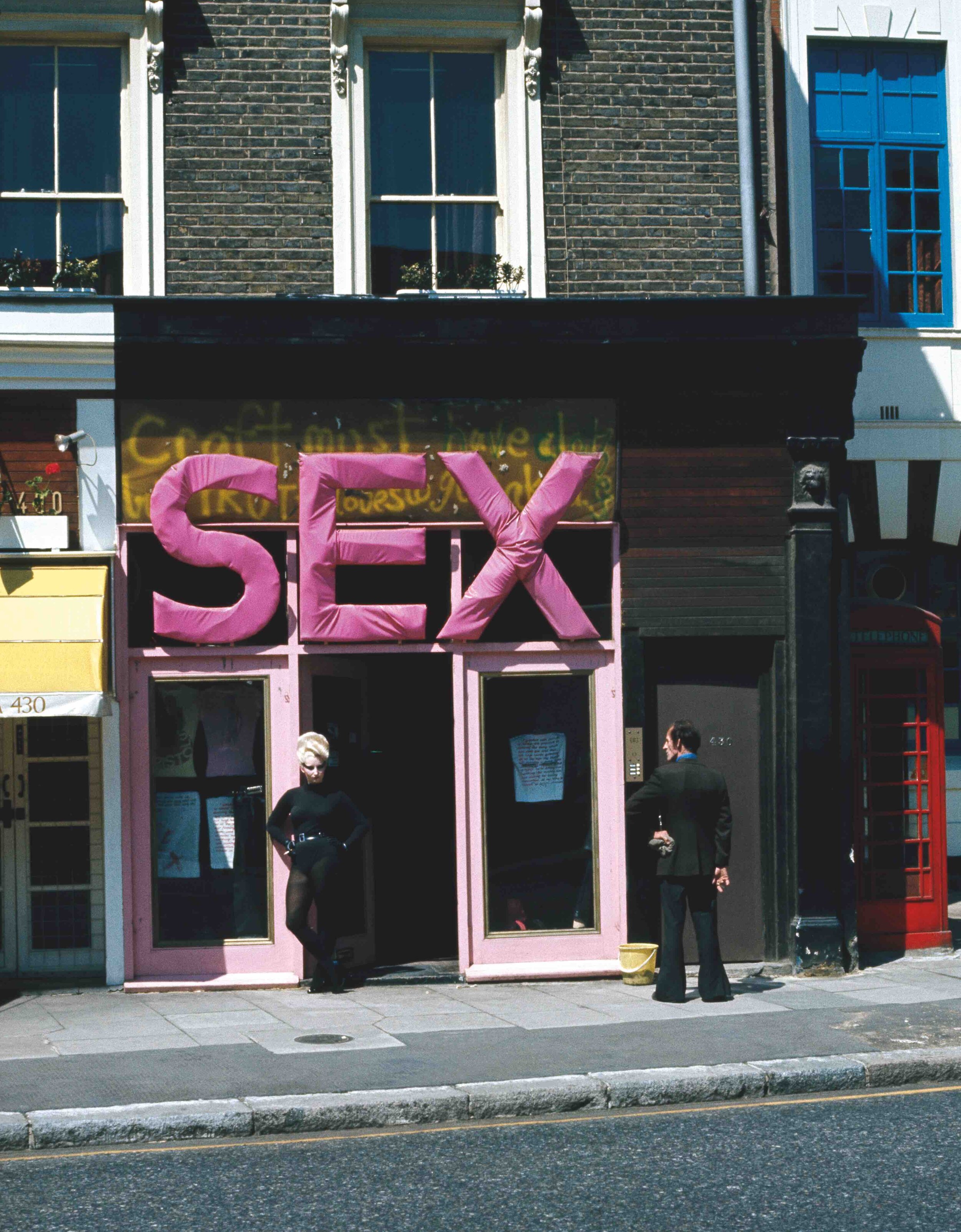REBELS & RENEGADES: The Photography of Sheila Rock at Street Level Photoworks, Glasgow
The Clash, "Sniffin' Glue" Camden Town, London, 1977
Elliott Gallery is excited to announce the opening of Sheila Rock’s photography exhibition, as part of Street Level Photoworks’ REBELS & RENEGADES exhibition. The shows runs from 16th November, 2024 until 30th March 2025, covering the zeitgeist of punk, post punk, and new pop through the acts in music culture from the 70’s to the early 90’s.
Jordan in the 'SEX' doorway
Following the success of her Sheila Rocks! exhibition at Elliott Gallery in 2019, featuring her iconic punk-era photography, Sheila’s images are now being showcased in Glasgow, marking her first-ever showcase in Scotland.
Siouxsie Sioux live at The 100 Club, London, ca. 1977
Read Sheila Rock’s compelling text on her firsthand experience of the early punk scene in London, accompanying the exhibition:
A SHADOW AT THE START
The King’s Road was my introduction to the punk scene. Specifically, the shop Acme Attractions and meeting Don Letts, his then partner Jeannette Lee, and John Krivine who owned the shop. Don was a dynamic force with great style. Everyone was drawn to this shop, particularly musicians and fashionistas. I met Billy Idol and Siouxsie Sioux there before they were in any bands, back then they called themselves the Bromley Contingent. Later Billy Idol formed Generation X with the help of John Krivine who was their early manager, and Siouxsie of course became the singer in Siouxsie and the Banshees.
At that time, it really felt like something exciting was happening in Chelsea. There was a different way of thinking and being. It was provocative. It felt courageous.
I became friends with Don Letts and Jeannette Lee, and John Krivine. I remember meeting Peter Christopherson from Throbbing Gristle and the artist John Harwood who together created the visual concept for BOY. At the time BOY was the alternative shop to SEX, which was owned by Malcolm McLaren and Vivienne Westwood. I remember enjoying the camaraderie of the writer Jon Savage, who later went on to write the definitive punk book England’s Dreaming. We were experiencing the evolution of punk at the same time. Not particularly thinking we were special, but we were involved in a transformative movement.
I was never consciously in a “scene” and moved seamlessly through punk at the time, just as I did with other areas that interested me, areas that had no relation to music or subculture. I was a young person interested in photography, but I had no real expertise, I just photographed what was around me. I was like a shadow at venues, somehow recording a seminal period in British social and musical history. I had no agenda or career aspirations; I just thought something different was happening and I felt compelled to document it. There was no commercial motivation or even a magazine assignment. I was drifting, but not in a mindless way; the mid Seventies were a bit like the Wild West, I was one of many young people finding their way.
The early years of punk were about individuality and self- expression. It was a time of experimentation and creative energy. Girls and boys looked cool but with no resources. They found clothes in second-hand shops and put together their unique outfits. They went to gigs looking great and affiliated themselves with bands struggling to express a new sound. I was basically self-taught, and this resonates with the early punk bands struggling to play instruments and creating new music.
We were all trying to find our voice. It was hard not to create friendships during this time. The few people I got to know were special; we encouraged each other. It was a small clique, a supportive family. Punk in London resembled a tiny village, it was nothing like the global force it is today. It’s extraordinary to think that punk’s influence has lasted for so long. Punk clearly had power. After punk, the New Romantics movement I photographed was the same. Fundamentally I think it was young people striving to become something extraordinary. Taking risks and being outrageous, changing fashion and music forever.
- Sheila Rock
Debbie Harry of Blondie shot on the Rooftops after a Gig at The Rainbow Theatre, Finsbury Park, London, November, 1977




